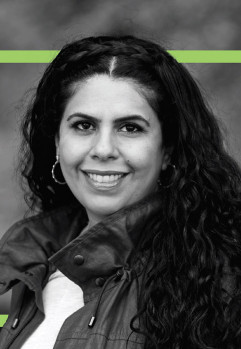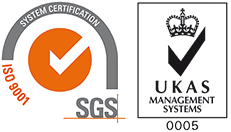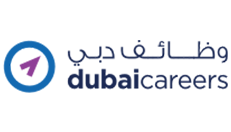A Driving Force
Saudi contemporary artist Manal AlDowayan, famous for her large-scale art installations, black and white photography and sculptures, is fascinated with words. She was one of the artists recently invited to create work for the Nobel Museum exhibition ‘Sharing Worlds’ – a celebration of the Nobel Prize in Literature.
When Saudi Arabia lifted its ban on women driving last year, one image became synonymous with the decree. Entitled The Choice (2005), the black and white portrait by acclaimed Saudi artist Manal AlDowayan portrays a woman hiding behind a steering wheel, and it was regarded as a symbol of this seismic shift in women’s rights.
Talking to Fari Bradley for Conversations on the Avenue, AlDowayan said: “When it was circulated on social media once the announcement was made, I had very interesting discussions about how this work may now be historical, and no longer contemporary – it’s entering that space of remembrance. I’m very happy that it’s gone into that space, and I look forward to all of my works losing their contemporary status and relevance.”
Very few artists would hope that their work would lose relevance, but for AlDowayan this transition from the contemporary to the historical represents a source of hope. “At the beginning, I used to fight the feminist label I was given because in the West, feminism and the fight for women’s rights has the reputation of being too extreme,” AlDowayan told Saudi Gazette. “However, in Saudi Arabia feminism is at its very beginning and women’s issues need to be pushed forward. So yes, I am a feminist and I am happy to carry this label in the hope that the next generation won’t need to.”
Through her photography, LED works and installations, which have been exhibited at the Victoria & Albert Museum in London, Venice Biennale, Aga Khan Museum in Toronto, and Louisiana Museum of Modern Art in Denmark, AlDowayan focuses on the role of women in Saudi Arabia. Long before the driving ban was lifted, AlDowayan had highlighted the plight of female passengers in her photographic works The Choice (2005) and Crash (2014 – present), and a video installation entitled I Had No Wings (2015). Commissioned by Rolls Royce and exhibited in Alserkal Avenue, Dubai, the multivideo installation “documents the experience of being in the backseat with all its implications physically, mentally, emotionally and politically,” according to AlDowayan.
Along with her largely monochromatic palette, a common thread throughout AlDowayan’s work is the use of the written word. In an interview with Louisiana Museum of Modern Art, she explains the importance of text in her artworks. “The written word is about engaging the viewer: you are not only a receiver, you’re actually a contributor to [the artwork] in the sense you translate the words, you read them, and you formulate your own opinion as to what the meaning is within the context of your life. And I find that very, very powerful.”
“The written word is about engaging the
viewer: you are not only a receiver, you’re
actually a contributor to [the artwork] in the
sense you translate the words, you read them,
and you formulate your own opinion as to what
the meaning is within the context of your life. And
I find that very, very powerful”
MANAL ALDOWAYAN
This fascination with words can be traced back to one of her earliest and best-known collections, the 2005 series I Am, a reaction to King Abdulla AlSaud’s inaugural speech. “King Abdulla had just taken the throne, and for many women he was the person who was going to bring us out of the darkness,” AlDowayan recalled. In his speech, the King called upon all Saudis to unite, saying that women would help build the country together with men. At the time, although 60% of Saudi women held college degrees, only 3% were in the workforce, and so many were excited by this statement of support.
In the coming days, however, AlDowayan said: “The opinion leaders in the newspapers started to write: ‘Don’t get too excited; women will join the workforce, but only in jobs that suit their nature’. And so I started to question, what suits my nature as a woman, and who gets to decide what suits my nature?”
“I started to invite women to come in and pose for photographs – these were women who were already working, this was not theoretical,” AlDowayan explained. One of these portraits was of an educator, who held a chalkboard that had the words ‘Ignorance is darkness’ written over and over again in Arabic. “I think that was a very powerful statement, and that was the beginning of when I started to use words in my art,” she said.
Text also forms the backbone of her 2011 installation Suspended Together. Via social media, AlDowayan invited Saudi women to submit their ‘permission to travel’ documents, which are signed by their male guardian and required when crossing borders. More than 200 women sent scans of their papers, which AlDowayan transformed into a flock of fibreglass doves. “It’s called Suspended Together because the artwork includes documents from awardwinning scientists, artists, writers, grandmothers, and children as young as six months. And the way it’s portrayed within the form of a dove, they look like they are in flight, but in reality they are suspended, together. They create this mass of amazing energy that is frozen,” AlDowayan said.
While it’s impossible to ignore the societal statements in AlDowayan’s works, the artist does not define her art as political, per se. “Rather, I make art politically. This means I address my world from a personal stand. I make art as a proactive process. And art transcends political rhetoric.”
Born in 1973 in the eastern province of Saudi Arabia, AlDowayan now splits her time between London, Saudi and Dubai. “I really consider myself a citizen of the UAE, and I’m a true believer in the Gulf being a porous border. But what really made it important to me as an artist was the existence of an art industry in the UAE – there’s a good ecosystem here that helps an artist make work and fund work, and there are more than enough spaces to show work,” she said.
One such space has been the Nobel Museum in La Mer, Dubai, where two new works from AlDowayan were recently unveiled. Inspired by the books Midaq Alley by Nagiub Mahfouz and The Unwomanly Face of War by Svetlana Alexavitch, her artworks formed part of the ‘The Nobel Prize in Literature – Sharing Worlds’ exhibition, a collaboration between the Mohammed bin Rashid Al Maktoum Knowledge Foundation and the Nobel Foundation.
“In a region that is constantly evolving, there are very exciting things happening here,” said AlDowayan. “The UAE is a place where an artist can make work easily and cheaply, and be supported by the commercial industry and government institutions equally.”








